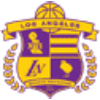Written by: Daniel Mulitauopele
The decision by the Lakers front office to ship out reigning Sixth Man of the Year Lamar Odom was unusual to put it mildly. What is even more confounding about the situation is that his departure seems to be without purpose, and the intentions of Lakers management are not clearly visible.
What can this Lakers team gain from losing a key part of the heart and soul of this Lakers core: an emotional leader who gave his all for what he so lovingly described as his “family?”
All heartfelt disappointments aside, this decision seems to be perplexing from even a business standpoint. As Dirk Nowitzki appropriately put it; “to get Lamar Odom for a trade exception – and I don’t even know what that is – we turned nothing into a great player.”
Ouch.
To hear a Mavericks player rejoice at the Lakers’ loss stings, but Dirk has a legitimate question. What is a trade exception? And what does that mean for the Lakers? Can it help them in the Dwight Howard sweepstakes?
Larry Coon, ESPN writer and analyst, may be the best source to ask these types of “capology” questions.
Coon describes trading scenarios like this:
“Teams under the salary cap may make trades as they please, as long as they don’t end up more than $100,000 above the salary cap following a trade. But if a team is over the cap, or they are under the cap and a trade would take them more than $100,000 over the cap, then an exception is required. An exception is the mechanism that allows a team to make trades or sign free agents and be over the salary cap. Since teams are usually over the salary cap, trades are usually accomplished using exceptions.”
In NBA trades, no team can make a trade that puts them $100,000 over the salary cap. For teams that are already often already over the cap (projected to remain at $58 million this year) like the Lakers and the Mavericks, any trade they enact requires the use of an exception. There are three types of trade exceptions: the minimum salary exception, the disabled player exception, and the traded player exception. Lamar Odom’s case relates to the traded player exception.
Coon goes on:
“The Traded Player exception is the primary means used by teams over the cap for completing trades. It allows teams to make trades that leave them over the cap, but it places several restrictions on those trades. Trades using the Traded Player exception are classified into two categories: simultaneous and non-simultaneous…In some cases, teams have up to one year to acquire the replacement player(s) to complete a trade. These trades are considered non-simultaneous trades. In a non-simultaneous trade, a team can only acquire up to 100% plus $100,000 of the salary it gives up (as opposed to 125% plus $100,000 in a simultaneous trade). A trade in which more than one player is traded away can only be simultaneous; non-simultaneous trades are allowed only when a single player is traded away (although teams can sometimes find ways to configure multi-player trades as multiple single-player trades which are non-simultaneous).”
Next Page: What This Means for the Lakers





